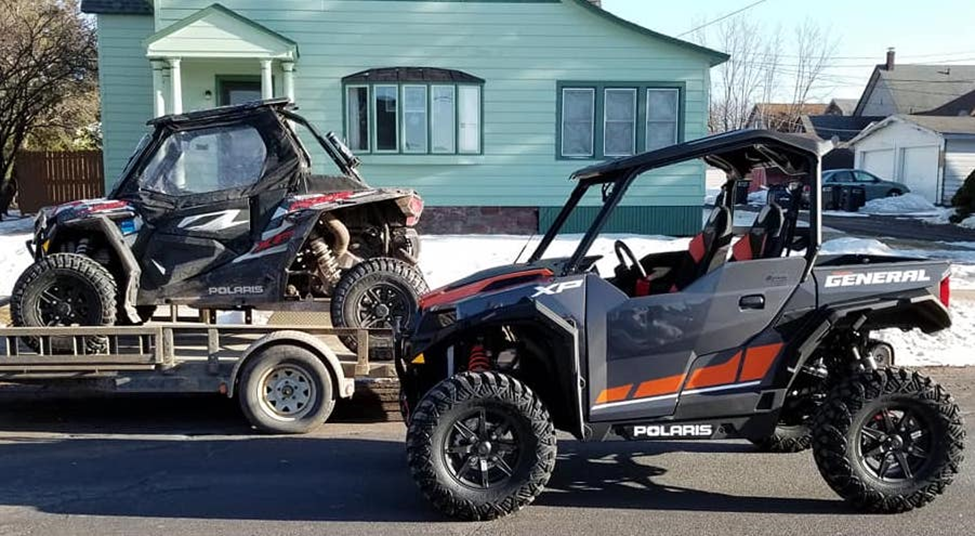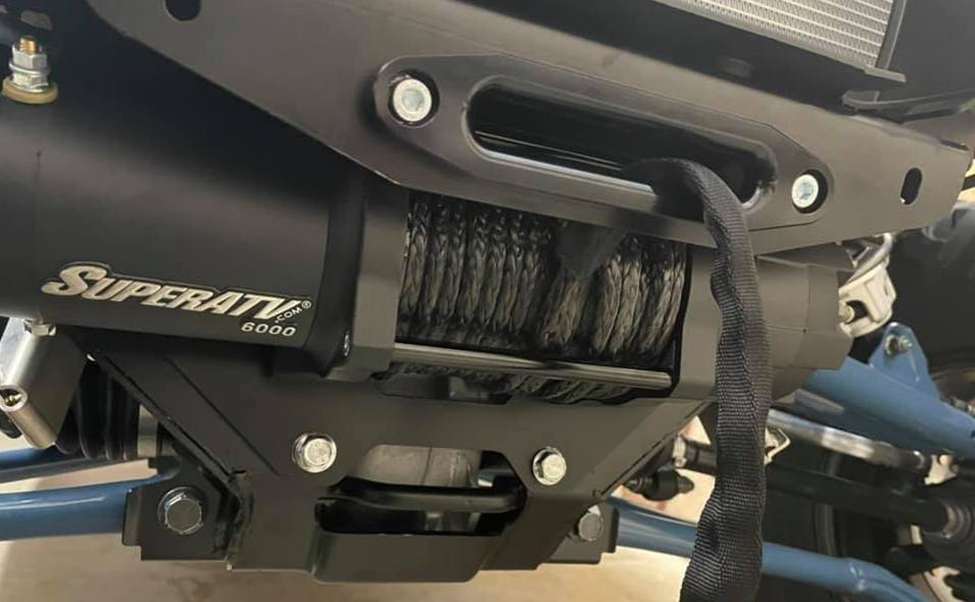10 Frequently Asked Questions About the Polaris RZR
May 15th 2023
Question 1: What is the weight of a Polaris RZR 1000?
Answer 1: The dry weight of a Polaris RZR 1000 is approximately 1,500 lbs. The RZR XP EPS is 1,448 lbs, the RZR XP Dynamix is 1,459 lbs, and the RZR Trails and Rocks Edition is 1,573 lbs. Keep in mind, however, that the dry weight is not equivalent to the curb weight, and you’ll have to factor in the additional weight of oils, fluids, and fuels for the true riding-around weight.
Question 2: Are Polaris RZR keys universal?
Answer 2: The Polaris RZR key blanks are universal, but each machine requires its own specific key. You can create a new key from an existing one, but if you’ve lost both your primary key as well as your spare key, you will have to replace the ignition.
Question 3: What is the length of a Polaris RZR 4 seater?
Answer 3: The Polaris RZR 4 seater is 146 inches long (12’ 2”, 4.056 yards, or 3.708 meters).
Question 4: When should you change the belt on a Polaris RZR?
Answer 4: You should inspect your Polaris RZR drive belt every 50 hours, 6 months, or 500 miles, and replace it if you notice any damage or fraying.
Question 5: What engine is in a Polaris RZR?
Answer 5: The Polaris RZR uses a ProStar engine, with the new RZR Pro R gaining much notoriety for its 225-horsepower generating 2.0L four-cylinder engine – touted as the most powerful motor ever to be put in a stock side-by-side.
Question 6: Where is the battery on a Polaris RZR 1000?
Answer 6: The battery on a Polaris RZR 1000 is located beneath the driver’s seat.
Question 7: What is the difference between a Polaris RZR and a Polaris General?

Answer 7: Where the Polaris Ranger is primarily a work machine, and the Polaris RZR is primarily a play machine, the Polaris General was designed to be a blend of both. The General is basically a stiffened-up and lengthened version of the RZR S. It has more bed space than the RZR, but is better for trail riding than the Ranger, making it a multi-purpose, do-anything class side-by-side.
The suspension on a Polaris General is adequate for reasonably-paced trail riding, but it’s not as good as the suspension in the Polaris RZR. In addition to having a bigger bed, the General also offers a larger cabin than the RZR for overall comfort and usability. For fast and aggressive riding, the sportyness of an RZR is best. If the terrain you ride isn’t overly challenging and you plan on using your rig for work / hunting, you can save money by getting a Ranger. But for a nice mix of both sport and utility, the Polaris General is the ticket!
Question 8: What are the different models of the Polaris RZR and which Polaris RZR is best?
Answer 8: Although all Polaris RZR models are built for speed and performance, each model is designed to fill a different niche. The RZR Trail and Trail S have a smaller track width and several other features that make them great on tight and twisty trails.
Where the RZR Trail is more nimble, the Polaris RZR XP has a geometry that makes the ride quality and comfort far superior. The RZR Trail is more like an RZR 900 in terms of size, but even with the bigger frame, an XP Razor can still fit on most trials – and it’s got trailing arms instead of control arms in the rear.
For extreme mud riding and water holes, the Polaris RZR Highlifter edition is a good choice because it comes with mud tires, a snorkel, and a gear reduction. They’re similar to the Rocks and Trails Edition – only minus the skid plates – and they’re a bit rougher in terms of ride quality than other RZR models because of their tender springs.
With regards to turbo vs non-turbo RZRs, some might say that if you’re not a horsepower junkie, then stay away from the Turbo – more power and more parts means more possible things to break. That being said, however, Polaris Turbo motors are just as reliable as their naturally aspirated motors, and the turbo platform has way more going for it than just a few extra HP. The entire drivetrain, for example, is beefed up, and instead of using a glorified bicycle chain for reverse like the XP 1000 does, turbocharged Razors have a geared reverse. On top of that, the transmission in the Turbo RZR is better, and so too is the front differential. If you’re going to buy a Razor based on how much more stuff there is to go wrong, you would still be driving an RZR 800. Nevertheless, if you don’t have a need for speed, the RZR XP 1000 is definitely a cheaper option.
Finally, Polaris also makes a 4-door RZR for more people and more space. The roominess of the Polaris RZR Pro XP 4 and the Polaris RZR Pro R 4 is nice, but that extra length also reduces the turning radius and makes the vehicle heavier. The 4-door RZR handles like a dream boat, though, and it’s much more stable and less tippy than the 2-door Razors thanks to the longer wheelbase.
Question 9: Where is the air filter on a Polaris RZR?
Answer 9: The Polaris RZR air filter is located between the bed and back seat of the vehicle. To clean or replace it, pull up on the latch that keeps the cargo box access panel in place, unclip the airbox cover, and remove the air filter cover if there is one.
Question 10: What winch should I get for my Polaris RZR?

Answer 10: If you ride in heavy mud, a 4,500 lb, 5,000 lb, or 6,000 lb winch is advised. But if you stick to dry trails and don't anticipate that you'll be using your winch that much, a smaller 3,500 lb winch might suffice in conjunction with a snatch block. As far as Polaris RZR winch brands go, riders have had good luck with KFI, Rough Country, SuperATV, and Warn. We did a breakdown of Polaris RZR winches, so check that out if you want to dig a little deeper!



